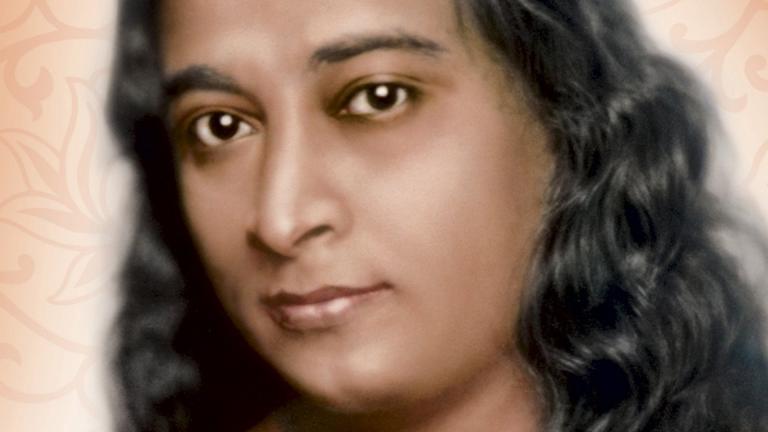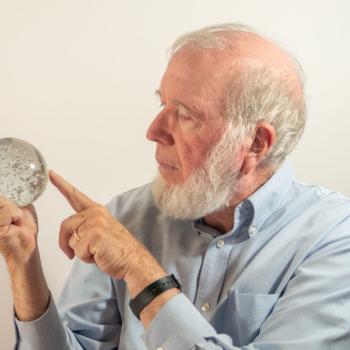
There’s a 78-year old book that has had an outsized effect on many modern-day spiritual seekers. Steve Jobs saw to it that copies of the book were handed out at his funeral. George Harrison was a devotee and gave a copy to then US President Gerald Ford. His wife Priscilla said it was even a favorite read of Elvis Presley.
The book is Autobiography of a Yogi by Paramahansa Yogananda, and its spiritual lessons are every bit as timeless and compelling today as they were last century. Originally published in 1946, Autobiography of a Yogi details the true adventures of young boy in India as he is exposed to valuable teachings from a host of unconventional teachers.
The boy would become known as Yogananda, a monk and an expert in the Kriya Yoga method of meditation. But more than yoga or meditation, Yogananda was an expert in the ways of life. He taught that yoga was about more than just moving the body, it was really about activating the mind.
In 1920, at the age of 27, Yogananda felt called to the United States and took a 2-month journey to the states via ship. He was an instant phenomenon, his first lecture in Los Angeles drawing over 6,000 people. Over the next 32-years, he would traverse the country lecturing and travelling until his death at age 59. (When it is said he left his body and moved on to a more enlightened state.)
What Yogananda can teach us today.
In the book Wisdom of a Yogi, Rizwan Kirk distills the teachings of Yogananda into 14 core messages. In essence, Wisdom of a Yogi is a book about Yogananda’s more famous book. But it is immensely helpful in that Kirk applies the lessons he learned there to his own modern-day life (he is a successful tech entrepreneur) and invites us to apply these teachings to our own lives.
Kirk explains that Yoganada offers us a portal into spirituality and a way to seek God “no matter what one’s religion or lineage.” Yogananda himself explained that ‘God’ is not some external entity. God is self-realization, “something that happens inside us as we lift the veil between the material and the spiritual worlds.”
What follows are five key spiritual lessons I learned from the book, though they don’t track precisely with Kirk’s list of 14. And of course, the book goes much deeper into these ideas than I will here.
- We can find our spiritual path while working and living in the world.
This one struck home as I shared a similar sentiment in my recent book Wake Up Call. I felt the spiritual call in my late-20s but chose to remain a part of the world as opposed to escaping from it. As Kirk puts it, “you don’t need to go to the Himalayas” to find your path. Some tend to look “out there” for spiritual success, going so far as to quit their jobs and pursue bliss in India or another remote location. Yogananda reminds us that “what one does not find within will not be discovered by transporting the body hither and yon.” Often what we are seeking is very near us, right under our eyes or just around the corner.
- The universe will send an important task your way.
Virk points out that Yogananda often had visions while meditating, which would offer him important clues on what steps in life he needed to take next. The same thing happens to you and me. These clues can often pop up in the form of dreams, synchronicities, and deep-seated intuitive feelings, one clue often following another. Virk tells us that:
- When a clue comes unexpectedly, it is important.
- When a clue repeats itself, take it even more seriously.
- When obstacles crop up but melt away after you make a decision, then you know the time is right.
Virk reminds us to use both our heads and our hearts when making any important decision. Your heart is “the source of intuition” while your brain can act as a double-check to make sure any decision you make is rational.
- Find time for spiritual practice every day.
No matter how much time, or how little you have, find the time to practice. And do whatever practice works for you. While like Yogananda Kirk engages in yoga, he points out the ultimate goal is “the cessation of the whirlpools of thought and feeling in the river of consciousness.” We want to “still something” in the body, which helps with “stress-release, well-being and health.” But yoga isn’t the only way to accomplish this.
We can also use meditation techniques like “watching the breath, being (fully) present, or focusing on a single thing” like a candle or a tree in the backyard. Any practice that “helps to smooth out the whirlpools” in our heads works.
- The physical world is not the highest reality.
There is something just beyond it, a world which we cannot see. As Virk says, “everything we see around us in everyday life is a result of not being able to see beyond the veil of illusion.” We can tend to get caught up in the part we play in life but it’s akin to being in “a vast motion picture.” The real world lies just beyond the screen. Whether you experience success or failure, triumph or tragedy, be less attached to these outcomes. If things go as planned, great. If they don’t, that’s okay too. It’s all part of the movie that is life.
- The guidance you need is available to you.
Yogananda informs us that one way to get the help we need is prayer, but Virk has a loose description of what this means. In his words: “It almost doesn’t matter who or what you pray to, as long as you connect it with a feeling of divinity.” He continues:
Praying to an entity that we perceive as divine usually puts us in a better mental place to be able to resolve problems and find solutions. You now have transferred the pressure that was weighing you down to something (or someone) larger and more capable than you.
It was Yogananda’s belief that God helps those who help themselves. When your mind is calm and you have faith that your prayer will work, you’ll begin to see various answers to your problems appear. With the same calm mind, you’ll be able to center on the solution that is best for you and find the success you seek.













